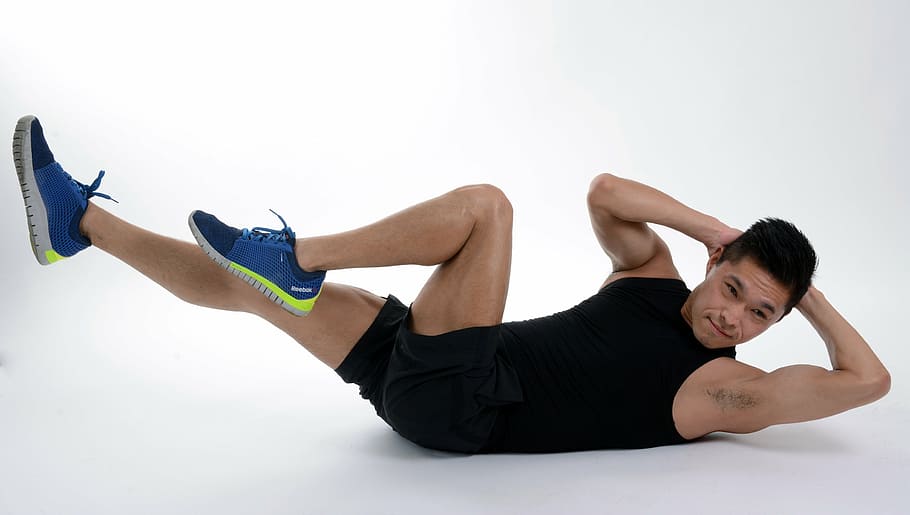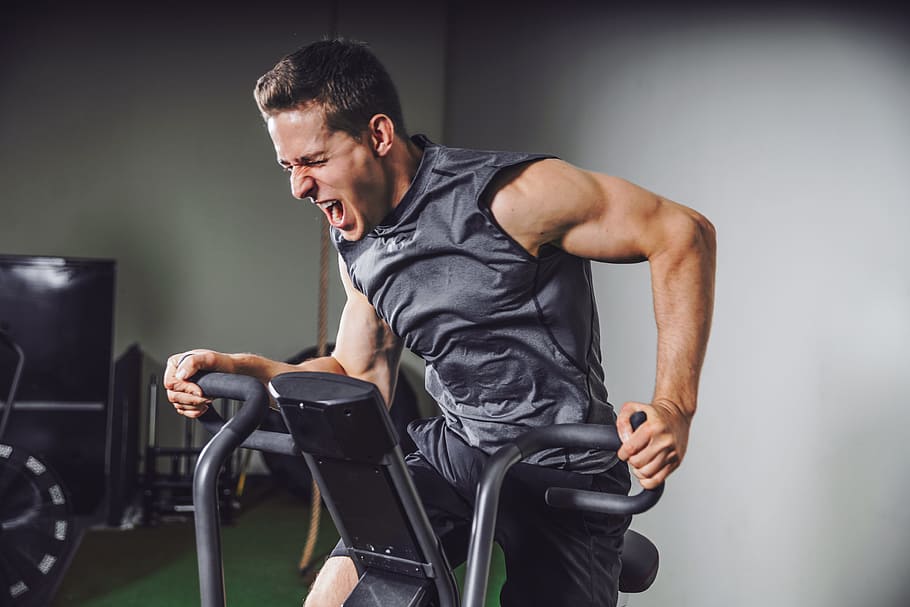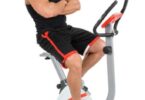Introduction to Cardio Exercises
Cardiovascular exercises, often referred to as cardio exercises or simply cardio, play a crucial role in maintaining our overall health and fitness. These exercises involve repetitive movements that increase our heart rate and help strengthen our heart and lungs. Cardio exercises are renowned for their numerous health benefits, ranging from weight management and improved cardiovascular health to enhanced mood and increased longevity. In this article, we will explore the incredible benefits of cardio exercises and discuss various types of cardio exercises suitable for different situations and conditions.
The Benefits of Cardio Exercises
- Weight Management:
One of the primary benefits of cardio exercises is their effectiveness in burning calories and aiding in weight loss. Engaging in regular cardio workouts can help create a calorie deficit, which is essential for shedding excess weight. Whether you’re performing a 3 minute cardio fat burning exercise or participating in longer, more intense workouts, cardio exercises can significantly contribute to achieving and maintaining a healthy body weight.
2. Improved Cardiovascular Health:
Cardio exercises strengthen your heart and cardiovascular system, promoting better circulation and oxygen delivery throughout the body. Regular cardio workouts help to reduce the risk of cardiovascular diseases such as heart attack, stroke, and high blood pressure. By increasing your heart rate and stimulating blood flow, cardio exercises improve the efficiency of your heart and enhance overall cardiovascular function.
3. Increased Energy Levels:
Engaging in cardio exercises on a regular basis can boost your energy levels and combat fatigue. Cardiovascular workouts stimulate the production of endorphins, which are known as “feel-good” hormones. These endorphins help to improve mood, reduce stress, and increase overall energy levels, leaving you feeling more energized and revitalized throughout the day.
4. Enhanced Mental Health:
Cardio exercises have been shown to have a positive impact on mental health. Regular cardio workouts help reduce symptoms of anxiety and depression, boost self-esteem, and improve cognitive function. The release of endorphins during cardio exercises creates a natural mood lift and reduces the risk of mental health disorders.
5. Longevity:
Research suggests that engaging in regular cardio exercises can increase your lifespan. Cardiovascular workouts improve heart health, reduce the risk of chronic diseases, and contribute to overall longevity. By maintaining a healthy weight, managing stress levels, and improving cardiovascular function, cardio exercises provide a solid foundation for a longer, healthier life.

Cardio Exercises for Specific Situations and Conditions
1. Plantar Fasciitis:
People ask what cardio exercises can I do with plantar fasciitis ?
Plantar fasciitis can cause discomfort and pain in the heel and foot. While high-impact cardio exercises like running may exacerbate the symptoms, there are several low-impact cardio exercises that can be performed with plantar fasciitis. Swimming, cycling, using an elliptical machine, or doing water aerobics are excellent options for cardio workouts that minimize stress on the feet.
2. Post-Shoulder Surgery:
Cardio exercise after shoulder surgery, it’s essential to focus on low-impact cardio exercises that don’t strain the healing shoulder joint. Walking, stationary biking, rowing, and modified strength training exercises can help maintain cardiovascular fitness without jeopardizing the recovery process. Always consult with your healthcare professional or physical therapist for personalized guidance after surgery.
3. Cardio leg exercises:
If you’re experiencing a leg injury or knee pain, it’s crucial to choose cardio exercises that minimize the impact on the affected area. Low-impact activities like swimming, using a stationary bike, using an elliptical machine, or engaging in water aerobics can provide an effective cardiovascular workout without putting excessive strain on the legs or knees.

4. Hip Labral Tear:
Cardio exercises Hip labral tears require special consideration when it comes to cardio exercises. Low-impact activities such as swimming, using an elliptical machine, or practicing gentle yoga can be beneficial for maintaining cardiovascular fitness without aggravating the hip joint. Avoid high-impact exercises such as running or jumping until you have fully recovered and received approval from your healthcare professional.
5. Foot Fracture or Broken Foot:
When dealing with a foot fracture or broken foot, high-impact cardio exercise broken foot are generally not recommended during the healing process. However, there are still cardio options available. Seated or chair-based cardio exercises, upper body ergometer (UBE) workouts, or using a hand cycle can provide a cardio workout without putting pressure on the injured foot.
Dumbbell Cardio Exercises and Bootcamp Workouts
1. Dumbbell Cardio Exercises:
Dumbbell exercises can add intensity and resistance to your cardio workouts, helping to build strength and burn calories simultaneously. Examples of dumbbell cardio exercises include dumbbell swings, thrusters, squat presses, and renegade rows. Incorporating dumbbells into your cardio routine can provide a challenging and efficient full-body workout.
2. Bootcamp Cardio Exercises:
Bootcamp-style workouts combine cardiovascular exercises with strength training, providing a high-intensity and dynamic workout experience. These workouts typically involve a variety of exercises such as burpees, mountain climbers, jumping jacks, high knees, and squat jumps. Bootcamp cardio exercises are known for their calorie-burning potential and their ability to improve strength, endurance, and overall fitness.
Cardio Exercises without Legs
While traditional cardio exercises often involve the use of legs, there are still plenty of effective cardiovascular workouts available for individuals who cannot engage their lower body. Whether you have a leg injury, mobility issues, or simply want to switch up your routine, here are some cardio exercises that focus on upper body movements and can be performed without relying on your legs:
- Arm Ergometer (Arm Bike):
An arm ergometer, also known as an arm bike or upper body ergometer, is a stationary exercise machine specifically designed to provide a cardiovascular workout for the upper body. It mimics the motion of cycling but utilizes your arms instead of your legs. By pedaling with your arms, you can elevate your heart rate, burn calories, and improve upper body strength and endurance. Adjust the resistance levels and duration according to your fitness level and goals.
- Seated Rowing:
Rowing is an excellent full-body workout that primarily targets the muscles in your arms, shoulders, and back. If you have access to a rowing machine with a seat and handles, you can perform seated rowing exercises. Sit on the seat with your feet firmly planted on the floor or on footrests if available. Grasp the handles with both hands, extend your arms forward, and then pull them back towards your torso, engaging your back and arm muscles. Repeat this motion in a controlled and fluid manner to get your heart rate up and enjoy a comprehensive upper-body cardio workout.

- Battle Ropes:
Battle ropes provide a high-intensity cardio workout that primarily engages your upper body and core muscles. This exercise involves holding both ends of a thick, heavy rope and creating a wave-like motion by alternately lifting and slamming the ropes onto the ground. It not only elevates your heart rate but also strengthens your arms, shoulders, and core. You can perform a variety of battle rope exercises, such as waves, slams, or circles, to keep your cardio routine engaging and challenging.
- Boxing or Shadow Boxing:
Boxing or shadow boxing is an effective cardio exercise that can be performed without using your legs. You can either engage in boxing with a punching bag or simply throw punches in the air, simulating the movements of a boxing match. Boxing workouts provide a full-body cardio workout while targeting your arms, shoulders, chest, and core muscles. Incorporate different punch combinations, footwork drills, and defensive movements to keep your heart rate elevated and challenge your upper body endurance.
- Chair-based Cardio Exercises:
If you have limited mobility or prefer seated exercises, there are various chair-based cardio exercises that can still provide an effective cardiovascular workout. These exercises typically focus on upper body movements and can be modified to suit your fitness level. Examples include seated jumping jacks (raising your arms and tapping your feet out to the sides), seated arm circles, seated punches, or seated shoulder presses with light dumbbells or resistance bands. Perform these exercises in a continuous and rhythmic manner to elevate your heart rate and improve cardiovascular fitness.
Remember, it’s essential to listen to your body and work within your comfort level. If you have any underlying health conditions or concerns, consult with a healthcare professional or certified fitness trainer before starting a new exercise program.
Conclusion
Cardio exercises offer an array of benefits for our physical and mental well-being. From weight management and improved cardiovascular health to increased energy levels and enhanced mood, incorporating cardio workouts into your routine can have a profound impact on your overall quality of life. Whether you’re performing a 3 minute cardio fat burning exercise or engaging in more extensive workouts, there are various options available to suit different situations and conditions. Remember to consult with healthcare professionals or fitness experts to find the cardio exercises that work best for you, ensuring safety and optimal results. So lace up your sneakers, find an activity you enjoy, and let cardio become your secret to a longer, healthier life.







